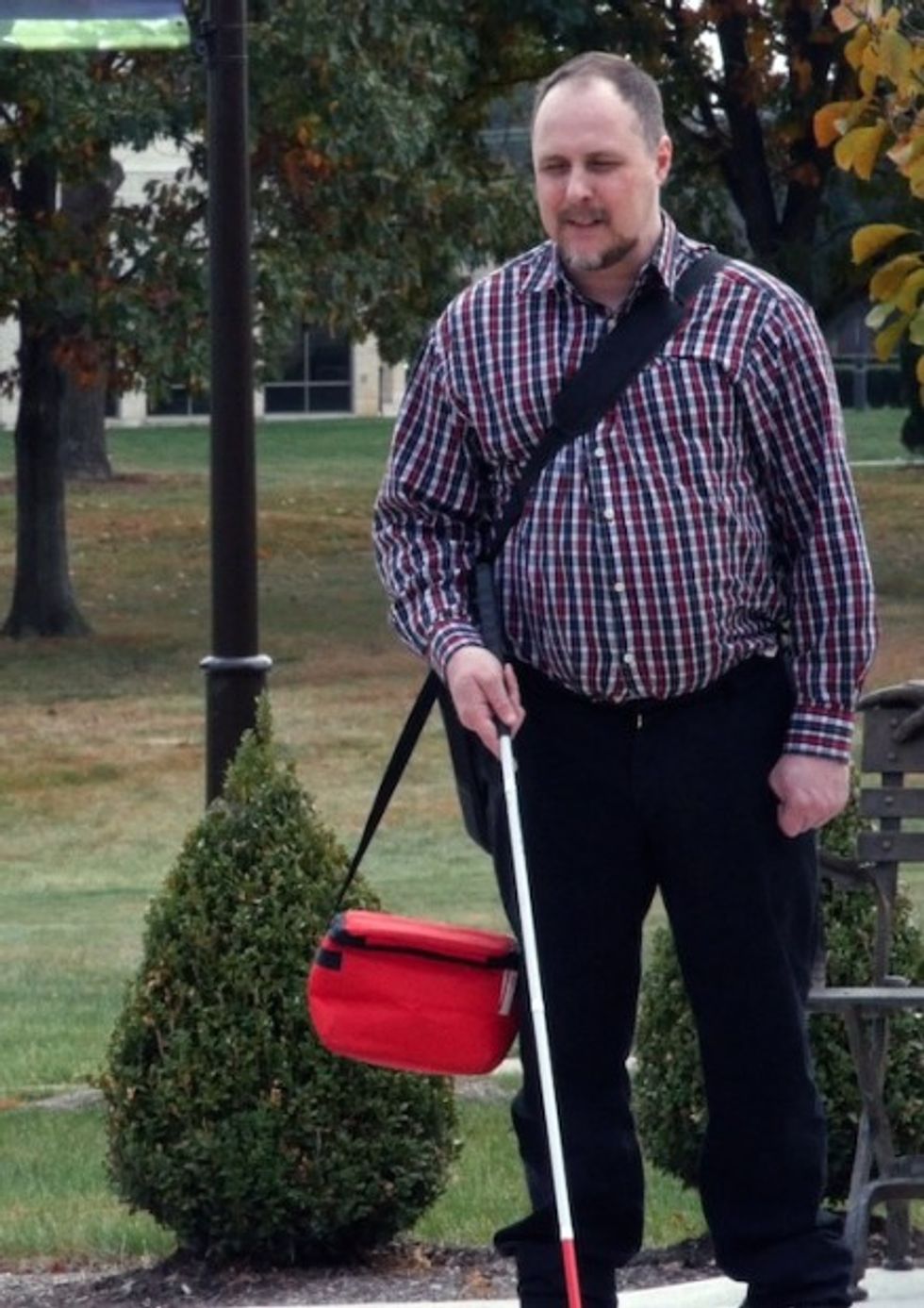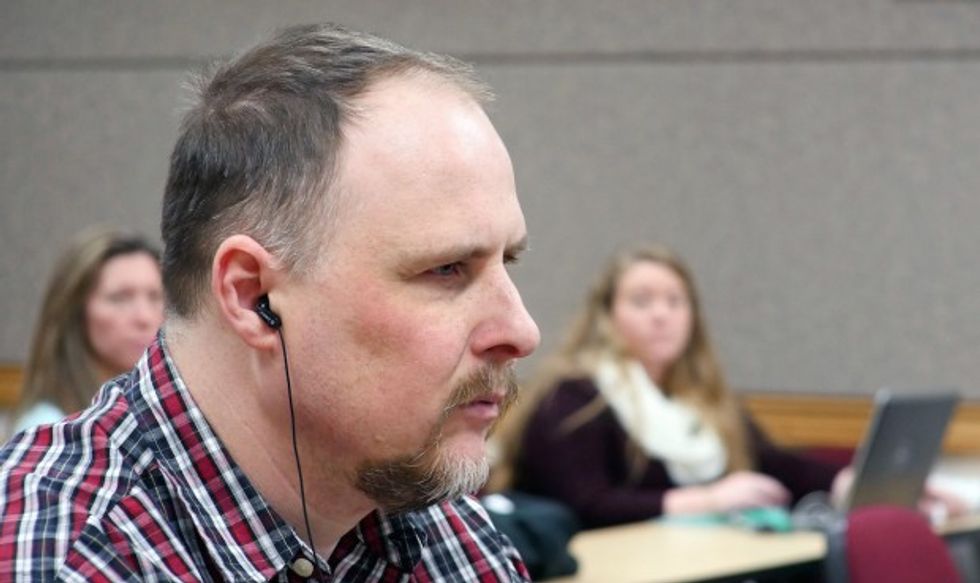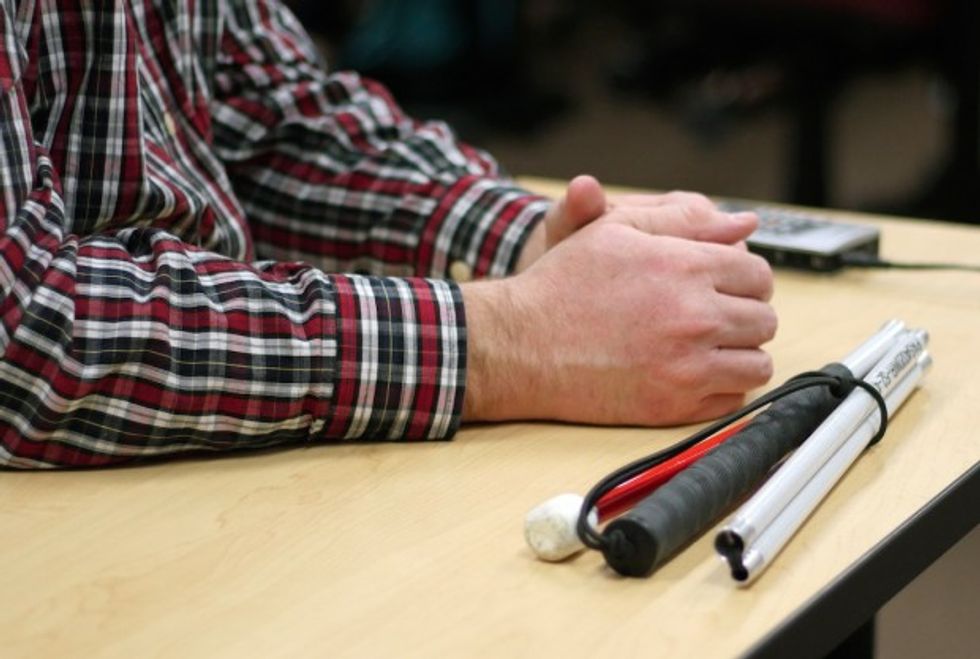
Photo credit: Central Ohio Technical College

When Michael Walker was a young boy, he could read, watch TV and ride his bike.
By the time he was 12 years old though, reading was nearly impossible. He didn't watch TV anymore but rather listened to it. And at 13 years old, after running into a woman standing on the street, he decided he better not hop on a bike again.
Walker was losing his eyesight due to a genetic condition called Leber's congenital amaurosis.
By the time he was 16, he was seeing only shadows. Now, at 44 years old even that has diminished, and while he can see light, he often has trouble identifying the source.

Imagine progressively losing your eyesight in such formative years and then entering college. That was Walker in 1991.
"I didn't really know what I wanted to do," Walker told TheBlaze.
With no laptop (such devices weren't quite mainstream yet), no typewriter, no recorder for notes, Walker said, "I wasn’t doing certain things to make me successful in school. I got burnt out and quit."
Twenty-four years later — after working for years stocking vending machines off of I-75 with the help of his wife — Walker is back at it and going for a double major in information technology and accounting.
"Obviously, today the technology is making it more possible," Walker said. "That probably applies to blind people being employed in general. Before computers, they were stuck in workshops where they make brooms. Now blind people are working in many fields thanks to technology like computers."
Central Ohio Technical College where Walker attends has been helping make sure he could perform as needed for classes as well.
"Mr. Walker is very independent and often teaches me about the technology he uses or how to have patience,” Director of Student Life Disability Services and Counseling Connie Zang said in a statement. “Our office determines and authorizes accommodations for students. Mr. Walker gets extended test time and use of technology that helps him.
Accounting instructor Amy Stahl said in a statement that while the "discipline is a very sight-driven process," Walker "is consistently outperforming his classmates."
“Mike has a mind that is like a steel trap,” she said.

To get through classes and homework, Walker is equipped with a digital recorder and laptop.
"My computer looks like yours, no different," he said. "What makes it different is the software. I use a screen reader called JAWS."
"I also use a thing called a braille display, which is a device that is about 10 inches long and about 3 inches wide, like a long strip. On this strip it’s got these dots that depending on what my curser is on (it hooks up to computer through a USB port)," it translates that to braille," he said. "It works in conjunction with the screen reader."

While these technologies can certainly make life easier, they're not perfect.
Chris Danielsen, director of public relations for National Federation of the Blind, told TheBlaze that while technological solutions are certainly more robust compared to those several decades ago, there are some aspects where improvements could still be made.
Take the screen reader software Walker mentioned.
What a screen reader processes is the metadata on the back end of programs and websites. If there is information not coded in a specific way to be picked up on the reader, "then it doesn't work as well," Danielsen said.
"For example, if you were to go to a shopping website, if there are just pictures of those products and not any text describing them, then a screen reader is useless," he said.
This is something that some employers and schools should watch out for in order to make sure blind employees and students have access to the information they need.
Technology is not the only step, though. Danielsen called it a "critical piece that has made a huge difference," but he said there have been technological advances helping the blind receive an education and perform more mainstream jobs for decades.
The barrier, he said, is attitude.
"The biggest barriers have always been artificial," Danielsen said. "A blind person has always been able to. Where there is a will there is a way."
Even with more acceptance of people with disabilities and antidiscriminiation laws, the National Federation of the Blind notes, based off of statistics from the 2013 American Community Survey, that only about 40 percent of working-age adults with significant vision loss are employed.
"The barriers have always been mostly about society's ... attitudes about blind people, that by virtue of our blindless we're simply not able to be educated and incorporated in society," Danielsen said.
As for Walker, his dream job when he graduates in 2016 involves "something that can give me a place to go everyday."
"I don't really have a dream job, just having a job would be my dream job," he said, but he added that finding a position in an accounting department for a company would be the ultimate goal.
Watch Central Ohio Technical College's feature video on Walker: